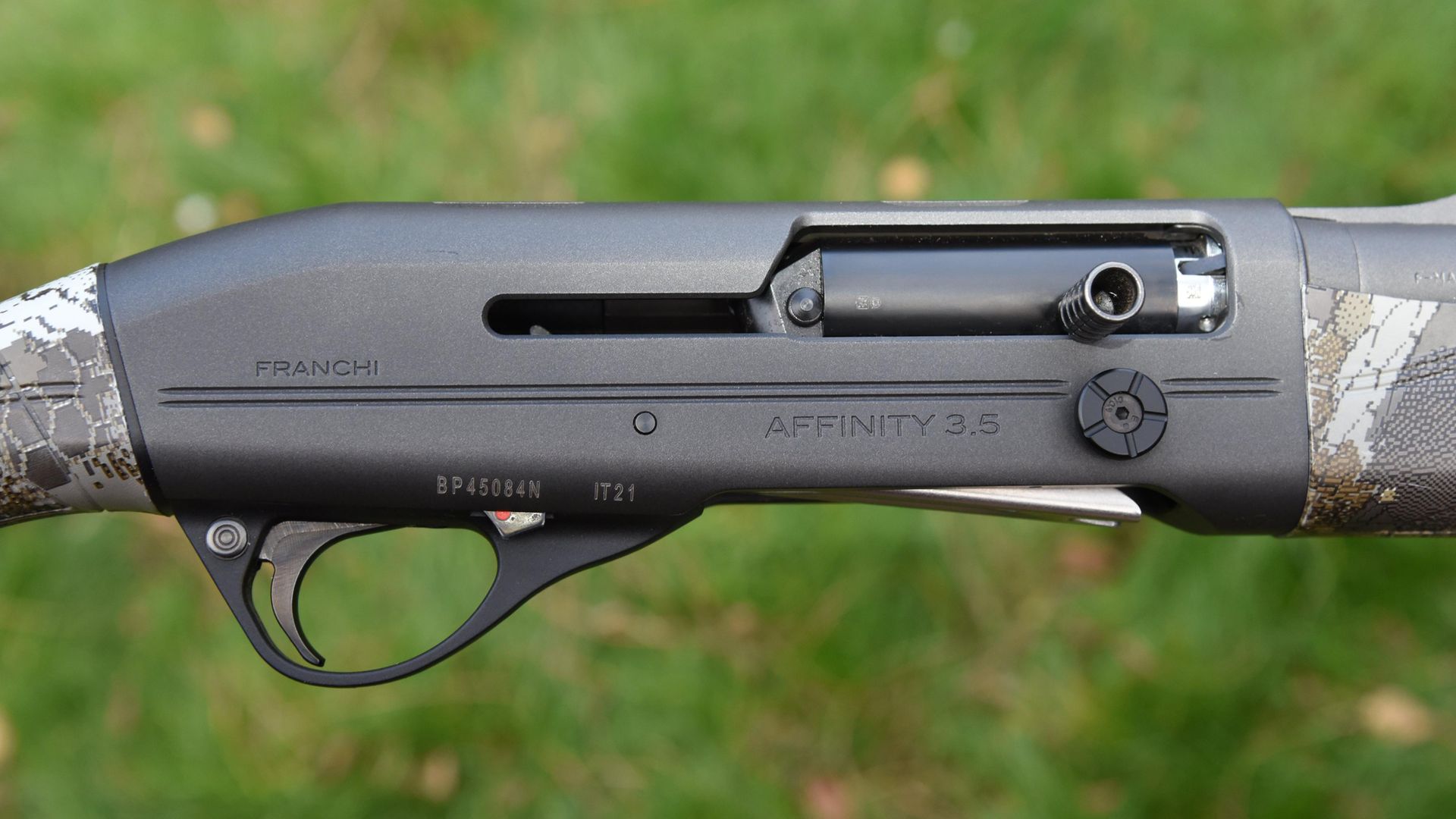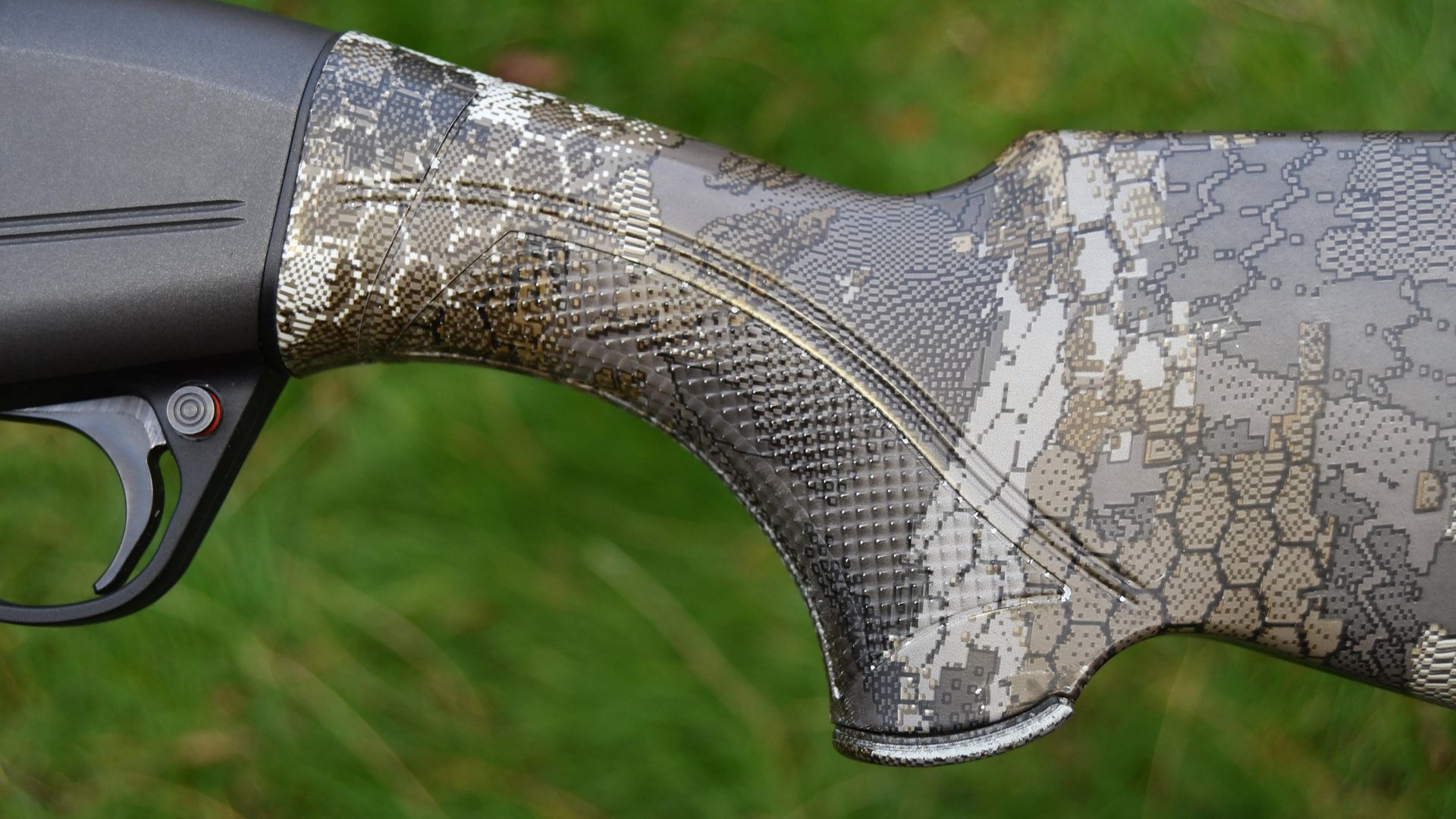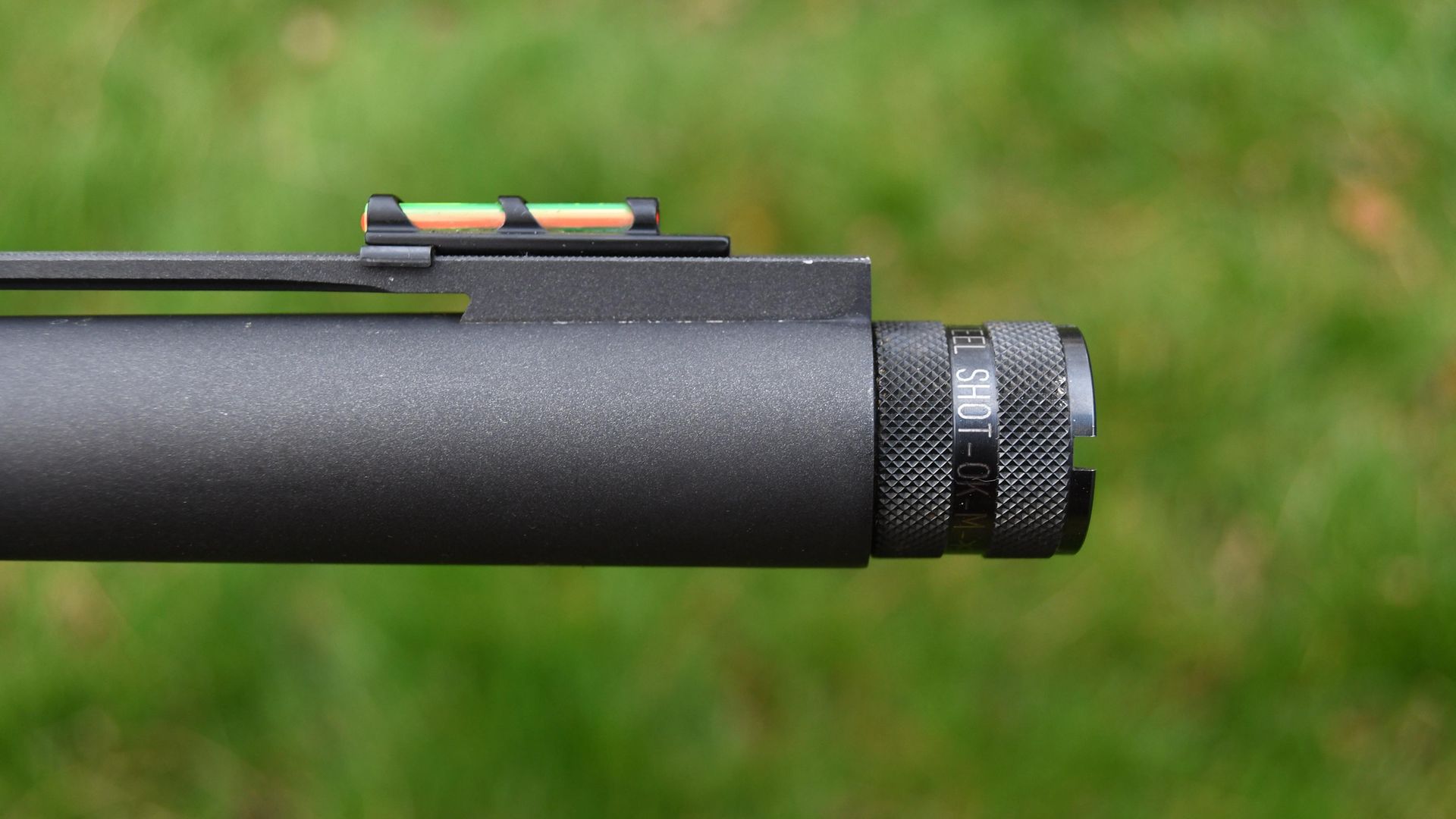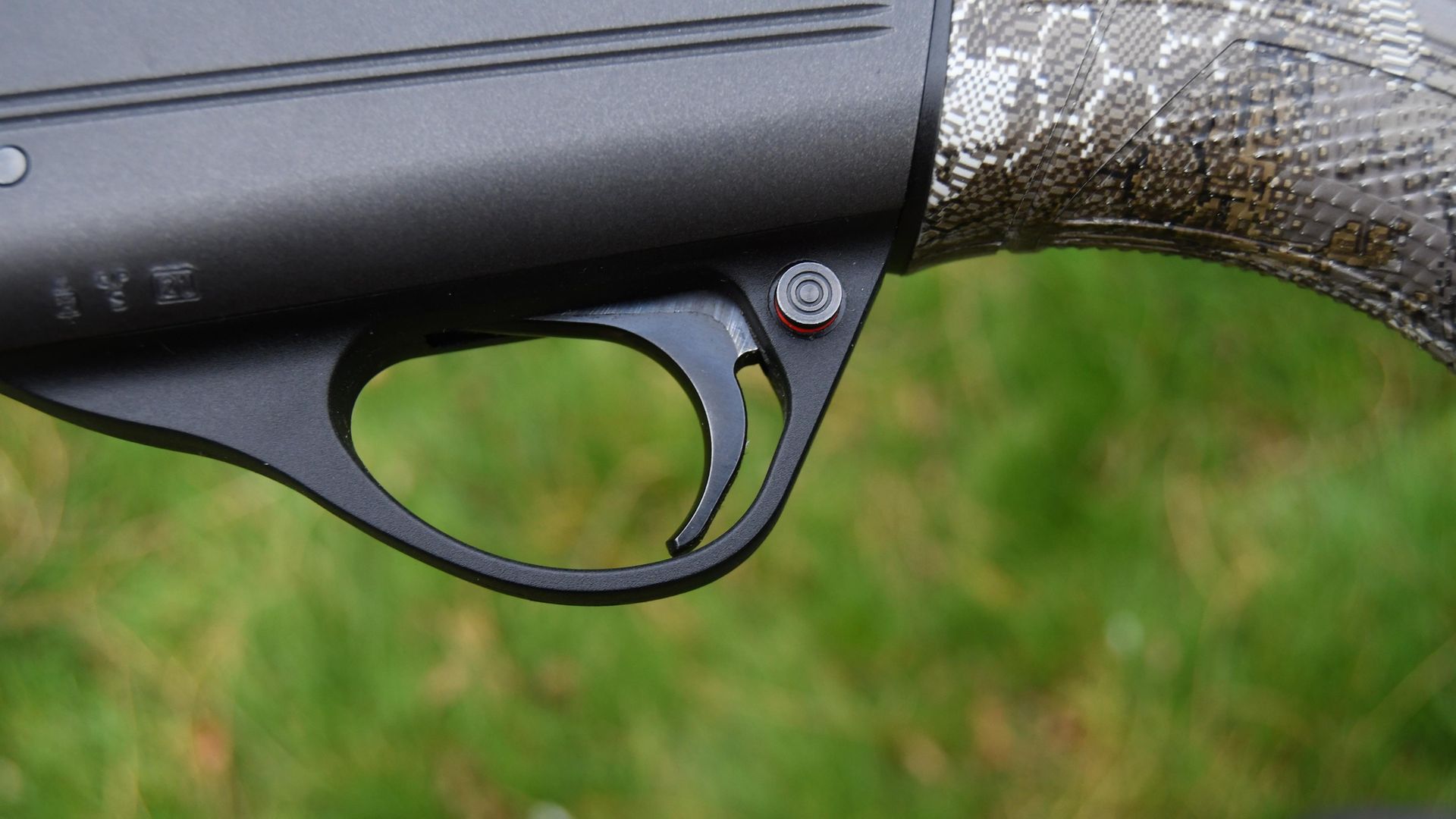With a synthetic stock, corrosion resistance and inertia operation, this steel-proofed semi-auto is a great option for the foreshore, says Mike Yardley in this test and review of the Franchi Affinity 3.5
This month’s test gun is a Franchi Affinity Elite 3.5 supplied by GMK of Fareham. It’s a long chambered (3 1/2”/89mm), steel-proofed, inertia-operated, semi-auto with an RRP from £1,000. So, it’s competitively priced compared to some of its Benelli stablemates which tend to be in the £1,500+ price range (though basic 3" Benelli models begin just over the £1,000 mark).
 credit: Archant
credit: Archant
First impressions
First impressions are of a well-specified, modern repeater with a trendy ‘OPTIFADE’ camo finish to the synthetic stock and corrosion-resistant Cerakoted barrel and receiver – a bonus for a gun that might be used under extreme conditions. The barrel is available only in 28", with a raised 9mm ventilated rib. Three extended multi-chokes are supplied. The gun weighs in at a whisker under 7lb - lighter than average, but near my ideal weight for a repeater that may need to be carried with other kit on the foreshore.
The test gun is 3½" chambered as noted, but you can get the similar 3” chambered, MAX-5 camo Afinity 3 with an RRP of £850. There is an FAC 3+1 mag capacity version of the test gun (as well as the standard Affinity) and an extension tube may further increase capacity to seven rounds. Although, the Franchi range is intended to offer value, these guns have actions made by Benelli and barrels hammer forged by Beretta. Many action and trigger parts are interchangeable with Benelli (the Affinity itself is quite similar to the M2).
Franchi semi-automatic shotguns were gas-operated (save the old long-recoil 48AL) but changed to inertia when Beretta bought them. Beretta themselves adopted the Benelli rotating bolt (as seen in the test gun) on their 391 Xtrema. Corporately, it’s all quite complex now. Franchi exist and operate as a separate brand but is headquartered at the Benelli facility at Ubino. Beretta itself has two more factories in Italy, and two in the US and also a manufacturing facility for less expensive semi-auto guns in Turkey (but no parts for its own guns are made there). There is a Spanish choke factory as well. It’s an extensive empire – Beretta itself, Benelli, Franchi, Holland & Holland, Tikka, Uberti, Burris optics and several others.
What of the 3½" shell? This was developed in the late 1980s by Federal in association with Mossberg who created a pump-action gun to suit it for ducks and turkey shooting. Semi-automatics soon followed, notably from Benelli and Beretta. I have to confess to having shot very few 3½" loads, and not that many 3" ones in my shooting life. The advantage of the ‘Roman Candle’ cartridges is increased shot payload – but, and for me it’s a big ‘but’, at the potential cost of greater recoil (and much greater actual cost). I have never been afflicted by ‘magnumitis’. I like light recoiling shotguns. That said, with the advent of steel, 3” cartridges begin to make more sense for wildfowling (I still use 70mm).
Anything more to be said of the Affinity 3.5? The action uses, like functionally similar Benellis, a short stiff spring between the rotating bolt-head and the main part of the bolt. This compresses on firing eventually unlocking the mechanism on full compression. Once the cartridge is fired and ejected, a long return spring around the magazine tube, which is itself compressed in the firing cycle, pushes the working parts back into battery.
Anyone exploring inertia operation as seen in Franchi and Benelli guns must be impressed with it’s ingenuity and essential simplicity. The only downside compared to gas operation is that felt recoil may be greater. The test gun is, however, fitted with a particularly efficient polymer ‘TSA’ recoil pad (with 13 and 32mm retrofit options) and it’s nice to see the facility to alter stock dimensions in the box too. You get a shim kit which allows for changes to drop and cast.
 credit: Archant
credit: Archant
Technical history
I’ve always been fascinated by inertia actions. They have been developed considerably since Hiram Maxim first mused on both gas and recoil operation circa 1880. In the meantime, the lever and pump-action shotguns were perfected creating the basic magazine tube below the barrel configuration for the gas and recoil operated guns that followed (which are, essentially, similar to pump guns using recoil or gas to operate their mechanism instead of hand power). John Moses Browning came up with the first successful semi-auto shotgun circa 1900 (in this the barrel moved).
The Danish Sjögren arrived shortly after (in this the action mass, rather disconcertingly, wizzes back towards your head on firing). Gas operated shotguns were perfected after WWII (much influenced by military rifles). And, in 1966, Benelli patented their inertia-operated gun. These have been made both with and without a rotating bolt-head. The test gun falls into the former category. It’s advantage over the gas gun is that its simpler mechanism has fewer complications; there’s no need to bleed off gas from the barrel and no regulating valve. It’s easier to clean and very reliable assuming the load is suitable.
 credit: Archant
credit: Archant
Shooting impressions
I always start testing on the No2 station at Skeet (which is my datum bird for all gun reviews). The Affinity did the biz, breaking target after target until we moved to the middle to make it harder, then on to Trap and Sporting birds with equal success. The gun shot better than expected frankly (as well as any semi-automatic recently tested).
It didn’t feel particularly refined, though. The grip surface and size could be improved, and, the trigger has some creep, but it shot well nevertheless with no malfunctions using 70mm loads (I had nothing longer). I liked the raised 9mm rib. The balance point is on the front edge of the action. The 14 1/2” length of pull suited me. I also liked the extended bolt-handle and bolt-release button.
With Half choke fitted I struggled to miss. It was forgiving too. I mis-mounted on a couple of shots, having trouble with achieving good purchase with cold hands, but still broke the target.
Overall, this is a well-considered gun at a not unreasonable price. If you don’t need 3 1/2” capability, however, consider the equally good Affinity 3.
 credit: Archant
credit: Archant
We like
- The easy to clean and assemble inertia action
- The Cerakote (thin film ceramic) finish to metal parts
- The sensible field weight
We don’t like
- The trigger has a little creep
- The grip is quite thin and lacking in purchase
Technical Specifications
Make: Franchi
Model: Affinity 3.5
Action type: rotary-bolt inertia
Bore: 12
Chamber: 3½ (89mm) steel shot proof
Barrel: 28” (only option)
Rib: ventilated mm
Weight: 7lb
RRP: £1,000 (with the Affinity 3 for up to 3”/76mm shells starting at £850).